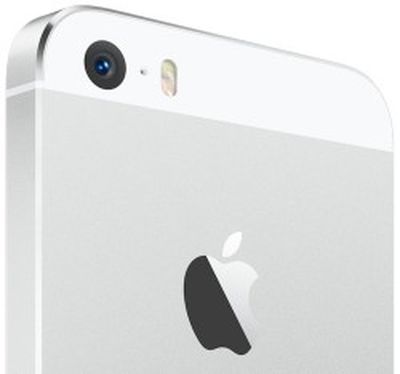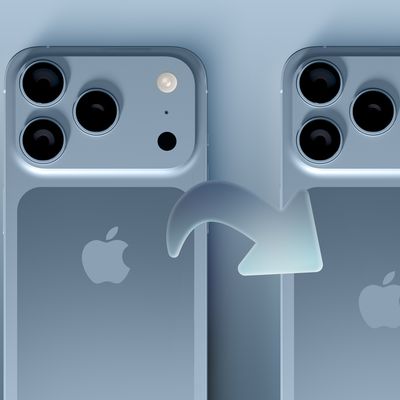iPhone 6 Camera May Feature Electronic Image Stabilization, Bigger Pixel Size
 Apple may be planning to use electronic image stabilization instead of optical image stabilization in the iPhone 6, according to new details shared on Weibo [Google Translate] by ESM China analyst Sun Chang Xu (via GforGames). Xu suggests that the iPhone 6's camera will also boast a larger pixel size of 1.75 um compared to the 1.5 um pixel size of the iPhone 5s' camera, which would result in a higher picture quality as more light can be taken in.
Apple may be planning to use electronic image stabilization instead of optical image stabilization in the iPhone 6, according to new details shared on Weibo [Google Translate] by ESM China analyst Sun Chang Xu (via GforGames). Xu suggests that the iPhone 6's camera will also boast a larger pixel size of 1.75 um compared to the 1.5 um pixel size of the iPhone 5s' camera, which would result in a higher picture quality as more light can be taken in.
While previous reports have indicated that Apple is looking to integrate optical image stabilization into the iPhone 6, adding an electronic image stabilization system would allow for the device to have a slimmer camera that does not protrude out of its body. To this point, a number of alleged iPhone 6 images, including renders posted by Japanese magazine MacFan last month, have depicted the iPhone 6 with a protruding camera.
Xu also previously reported on her Weibo account that the iPhone 6 will add pressure, temperature, and humidity sensors, and that the iWatch will utilize optical sensors to measure heart rate and oxygen levels.
Apple is expected to launch the iPhone 6 this fall in two different sizes of 4.7-inches and 5.5-inches. The smaller 4.7-inch version of the iPhone 6 will likely ship first, while the larger 5.5-inch version is estimated to ship later due to challenges with the device's display technology and battery life.
In addition to a larger display and an improved camera, both models of the iPhone 6 are expected to include a thinner, bezel-free design, faster A8 processor, and Touch ID fingerprint sensor. The device will also likely debut with Apple's iOS 8 mobile operating system, which will feature improvements to Maps, Siri, and iCloud in addition to a new "Healthbook" app. Apple is also said to be negotiating with carriers to increase the price of the iPhone 6 by $100.
Popular Stories
Apple's next-generation iPhone 17 Pro and iPhone 17 Pro Max are less than three months away, and there are plenty of rumors about the devices.
Apple is expected to launch the iPhone 17, iPhone 17 Air, iPhone 17 Pro, and iPhone 17 Pro Max in September this year.
Below, we recap key changes rumored for the iPhone 17 Pro models:Aluminum frame: iPhone 17 Pro models are rumored to have an...
The long wait for an Apple Watch Ultra 3 appears to be nearly over, and it is rumored to feature both satellite connectivity and 5G support.
Apple Watch Ultra's existing Night Mode
In his latest Power On newsletter, Bloomberg's Mark Gurman said that the Apple Watch Ultra 3 is on track to launch this year with "significant" new features, including satellite connectivity, which would let you...
The upcoming iPhone 17 Pro and iPhone 17 Pro Max are rumored to have a slightly different MagSafe magnet layout compared to existing iPhone models, and a leaked photo has offered a closer look at the supposed new design.
The leaker Majin Bu today shared a photo of alleged MagSafe magnet arrays for third-party iPhone 17 Pro cases. On existing iPhone models with MagSafe, the magnets form a...
iOS 26 and iPadOS 26 add a smaller yet useful Wi-Fi feature to iPhones and iPads.
As spotted by Creative Strategies analyst Max Weinbach, sign-in details for captive Wi-Fi networks are now synced across iPhones and iPads running iOS 26 and iPadOS 26. For example, while Weinbach was staying at a Hilton hotel, his iPhone prompted him to fill in Wi-Fi details from his iPad that was already...
The iPhone 17 Pro Max will feature the biggest ever battery in an iPhone, according to the Weibo leaker known as "Instant Digital."
In a new post, the leaker listed the battery capacities of the iPhone 11 Pro Max through to the iPhone 16 Pro Max, and added that the iPhone 17 Pro Max will feature a battery capacity of 5,000mAh:
iPhone 11 Pro Max: 3,969mAh
iPhone 12 Pro Max: 3,687mAh...
Apple today seeded the second betas of upcoming iOS 18.6 and iPadOS 18.6 updates to public beta testers, with the betas coming just a day after Apple provided the betas to developers. Apple has also released a second beta of macOS Sequoia 15.6.
Testers who have signed up for beta updates through Apple's beta site can download iOS 18.6 and iPadOS 18.6 from the Settings app on a compatible...
Apple is developing a MacBook with the A18 Pro chip, according to findings in backend code uncovered by MacRumors.
Subscribe to the MacRumors YouTube channel for more videos.
Earlier today, Apple analyst Ming-Chi Kuo reported that Apple is planning to launch a low-cost MacBook powered by an iPhone chip. The machine is expected to feature a 13-inch display, the A18 Pro chip, and color options...
 Apple may be planning to use electronic image stabilization instead of optical image stabilization in the iPhone 6, according to new details shared on Weibo [Google Translate] by ESM China analyst Sun Chang Xu (via GforGames). Xu suggests that the iPhone 6's camera will also boast a larger pixel size of 1.75 um compared to the 1.5 um pixel size of the iPhone 5s' camera, which would result in a higher picture quality as more light can be taken in.
Apple may be planning to use electronic image stabilization instead of optical image stabilization in the iPhone 6, according to new details shared on Weibo [Google Translate] by ESM China analyst Sun Chang Xu (via GforGames). Xu suggests that the iPhone 6's camera will also boast a larger pixel size of 1.75 um compared to the 1.5 um pixel size of the iPhone 5s' camera, which would result in a higher picture quality as more light can be taken in. 


















